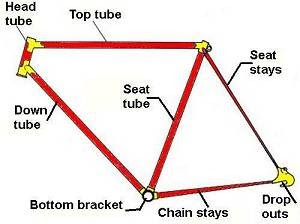
 5
5




 4
4




Our inability to change everything should not stop us from changing what we can.
 4
4




Gardens in my mind never need water
Castles in the air never have a wet basement
Well made buildings are fractal -- equally intelligent design at every level of detail.
Bright sparks remind others that they too can dance
What I am looking for is looking for me too!

 4
4




Nails are sold by the pound, that makes sense.
Soluna Garden Farm -- Flower CSA -- plants, and cut flowers at our farm.
 2
2




 6
6




Trees are our friends

 4
4




Our inability to change everything should not stop us from changing what we can.
 2
2




 4
4




Nails are sold by the pound, that makes sense.
Soluna Garden Farm -- Flower CSA -- plants, and cut flowers at our farm.
 4
4




 3
3




If you do build it, please post pictures. A friend of mine has mounted a number of his tool boxes using oversized casters, but yes, I wouldn't want to try them off-road. At one point I debated building some sort of a tool box/work table on a heavy duty dolly, but I wasn't convinced the dolly was wide enough for the idea to work. We have an long, odd-shaped property, and I'm often needing to carry tools all over the place over rough ground. Tools tend to be heavy, but if the moving tool box is too heavy on it's own, I'll never be able to push the combination up some of the slopes!William Bronson wrote:I wish I had something to illustrate what I'm describing.
Visit Redhawk's soil series: https://permies.com/wiki/redhawk-soil
How permies.com works: https://permies.com/wiki/34193/permies-works-links-threads
 4
4




Nails are sold by the pound, that makes sense.
Soluna Garden Farm -- Flower CSA -- plants, and cut flowers at our farm.
 6
6





 2
2




"The only thing...more expensive than education is ignorance."~Ben Franklin. "We can easily forgive a child who is afraid of the dark; the real tragedy of life is when men are afraid of the light." ~ Plato
 6
6




 4
4




 2
2




"The only thing...more expensive than education is ignorance."~Ben Franklin. "We can easily forgive a child who is afraid of the dark; the real tragedy of life is when men are afraid of the light." ~ Plato
 3
3




 3
3




 3
3




 3
3




 1
1




 4
4




 3
3





|
You learn how to close your eyes and tell yourself "this just isn't really happening to me." Tiny ad:
The new gardening playing cards kickstarter is now live!
https://www.kickstarter.com/projects/paulwheaton/garden-cards
|





